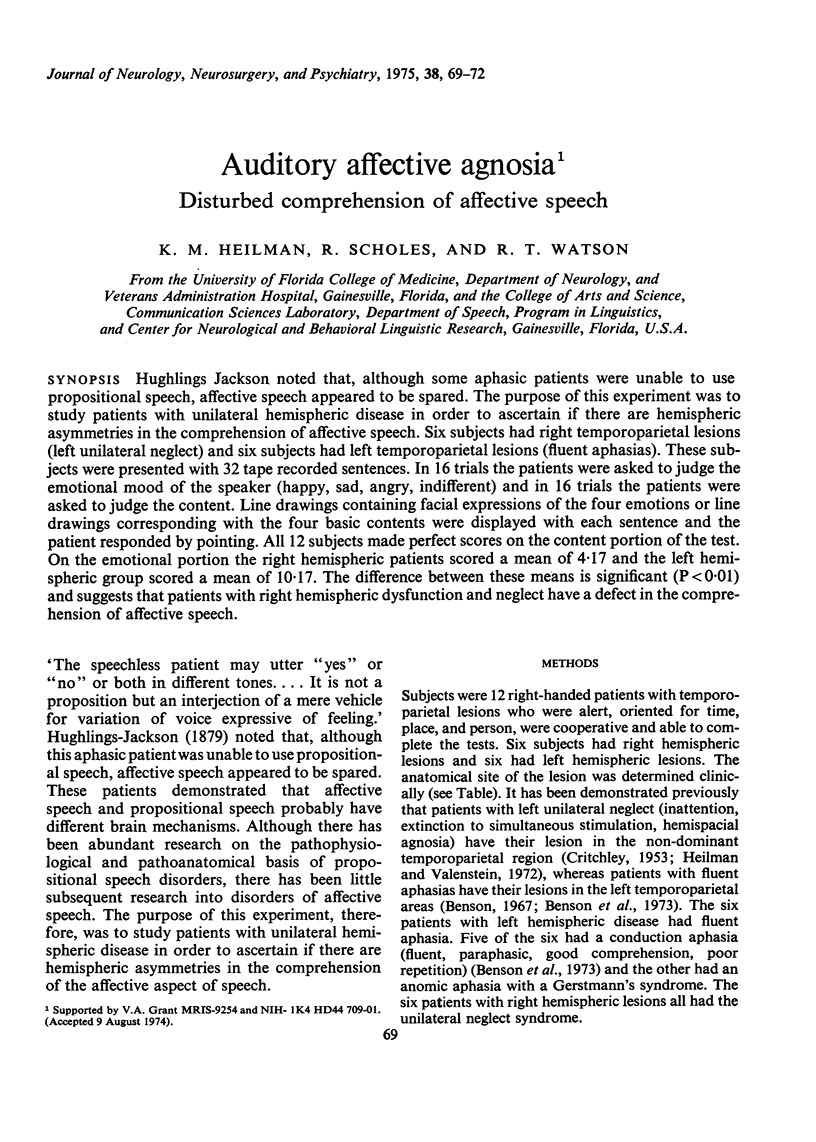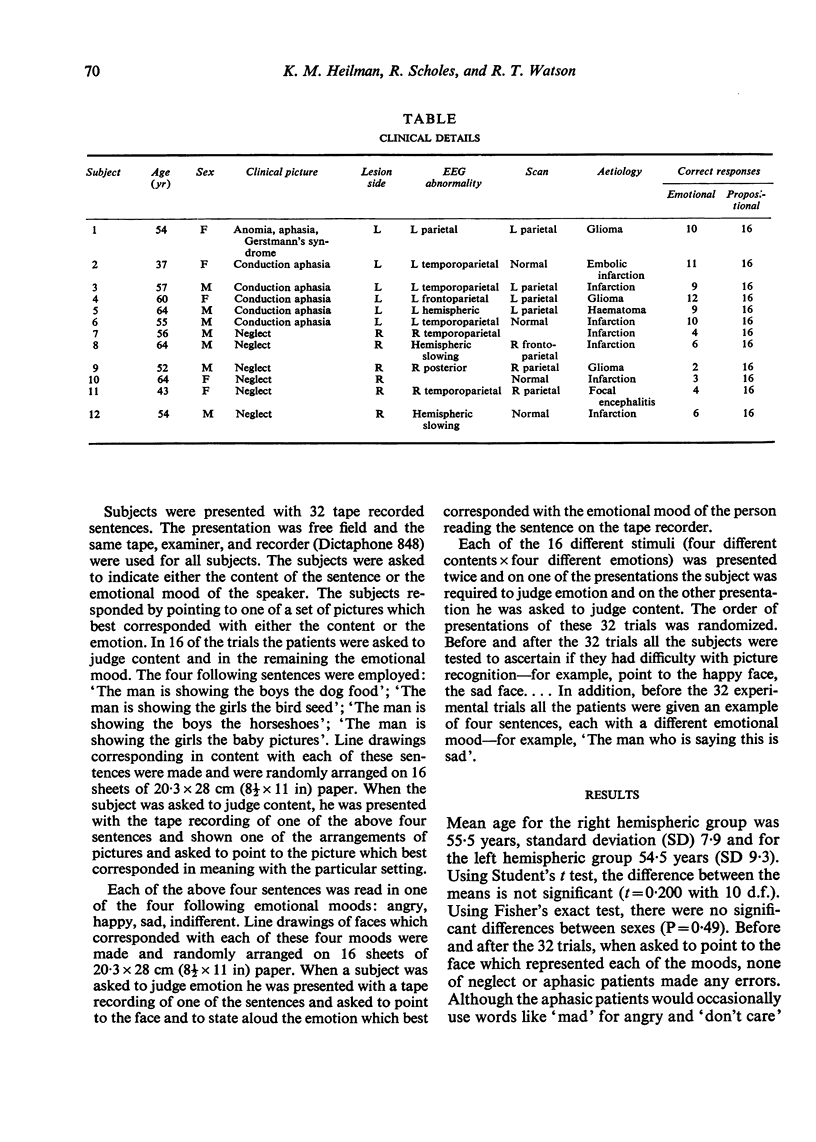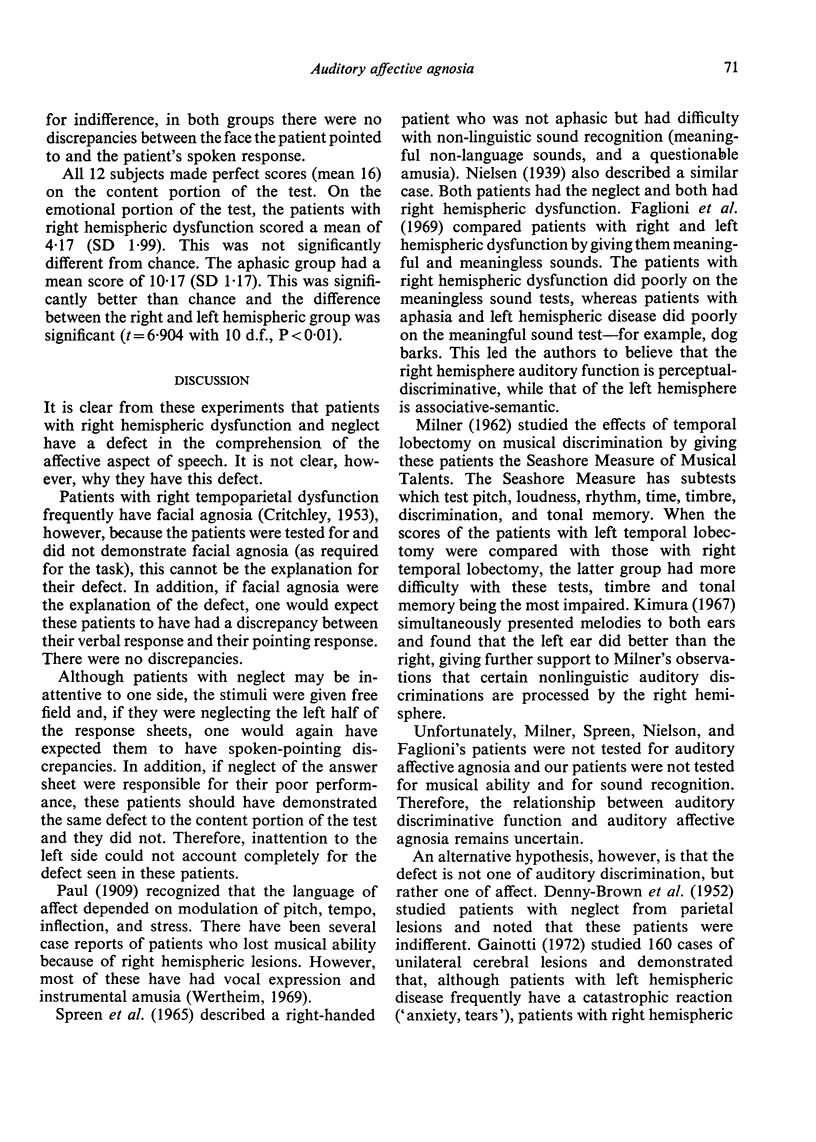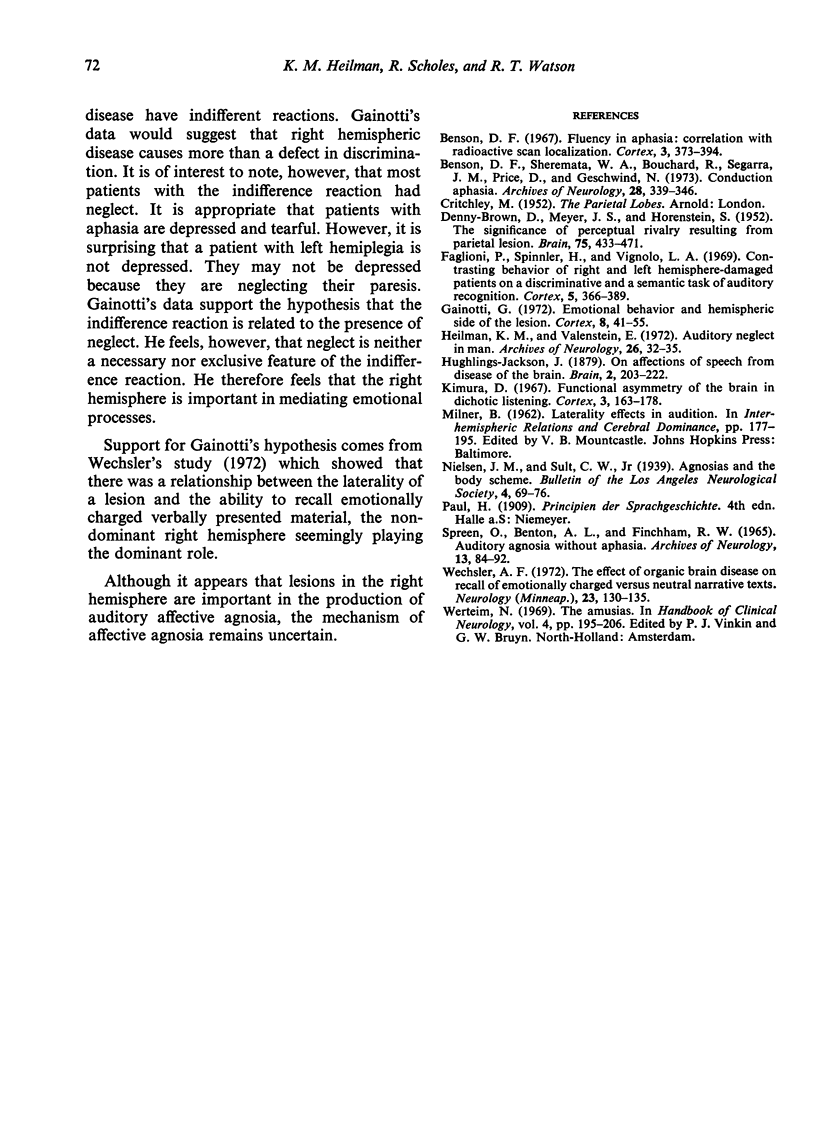Abstract
Hughlings Jackson noted that, although some aphasic patients were unable to use propositional speech, affective speech appeared to be spared. The purpose of this experiment was to study patients with unilateral hemispheric disease in order to ascertain if there are hemispheric asymmetries in the comprehension of affective speech. Six subjects had right temporoparietal lesions (left unilateral neglect) and six subjects had left temporoparietal lesions (fluent aphasias). These subjects were presented with 32 tape recorded sentences. In 16 trials the patients were asked to judge the emotional mood of the speaker (happy, sad, angry, indifferent) and in 16 trials the patients were asked to judge the content. Line drawings containing facial expressions of the four emotions or line drawings corresponding with the four basic contents were displayed with each sentence and the patient responded by pointing. All 12 subjects made perfect scores on the content portion of the test. On the emotional portion the right hemispheric patients scored a mean of 4-17 and the left hemispheric group scored a mean 10-17. The difference between these means is significantly (P less than 0-01) and suggests that patients with right hemispheric dysfunction and neglect have a defect in the comprehension of affective speech.
Full text
PDF



Selected References
These references are in PubMed. This may not be the complete list of references from this article.
- Benson D. F., Sheremata W. A., Bouchard R., Segarra J. M., Price D., Geschwind N. Conduction aphasia. A clinicopathological study. Arch Neurol. 1973 May;28(5):339–346. doi: 10.1001/archneur.1973.00490230075011. [DOI] [PubMed] [Google Scholar]
- DENNY-BROWN D., MEYER J. S., HORENSTEIN S. The significance of perceptual rivalry resulting from parietal lesion. Brain. 1952 Dec;75(4):433–471. doi: 10.1093/brain/75.4.432. [DOI] [PubMed] [Google Scholar]
- Faglioni P., Spinnler H., Vignolo L. A. Contrasting behavior of right and left hemisphere-damaged patients on a discriminative and a semantic task of auditory recognition. Cortex. 1969 Dec;5(4):366–389. doi: 10.1016/s0010-9452(69)80014-6. [DOI] [PubMed] [Google Scholar]
- Gainotti G. Emotional behavior and hemispheric side of the lesion. Cortex. 1972 Mar;8(1):41–55. doi: 10.1016/s0010-9452(72)80026-1. [DOI] [PubMed] [Google Scholar]
- Heilman K. M., Valenstein E. Auditory neglect in man. Arch Neurol. 1972 Jan;26(1):32–35. doi: 10.1001/archneur.1972.00490070050007. [DOI] [PubMed] [Google Scholar]
- SPREEN O., BENTON A. L., FINCHAM R. W. AUDITORY AGNOSIA WITHOUT APHASIA. Arch Neurol. 1965 Jul;13:84–92. doi: 10.1001/archneur.1965.00470010088012. [DOI] [PubMed] [Google Scholar]
- Wechsler A. F. The effect of organic brain disease on recall of emotionally charged versus neutral narrative texts. Neurology. 1973 Feb;23(2):130–135. doi: 10.1212/wnl.23.2.130. [DOI] [PubMed] [Google Scholar]


